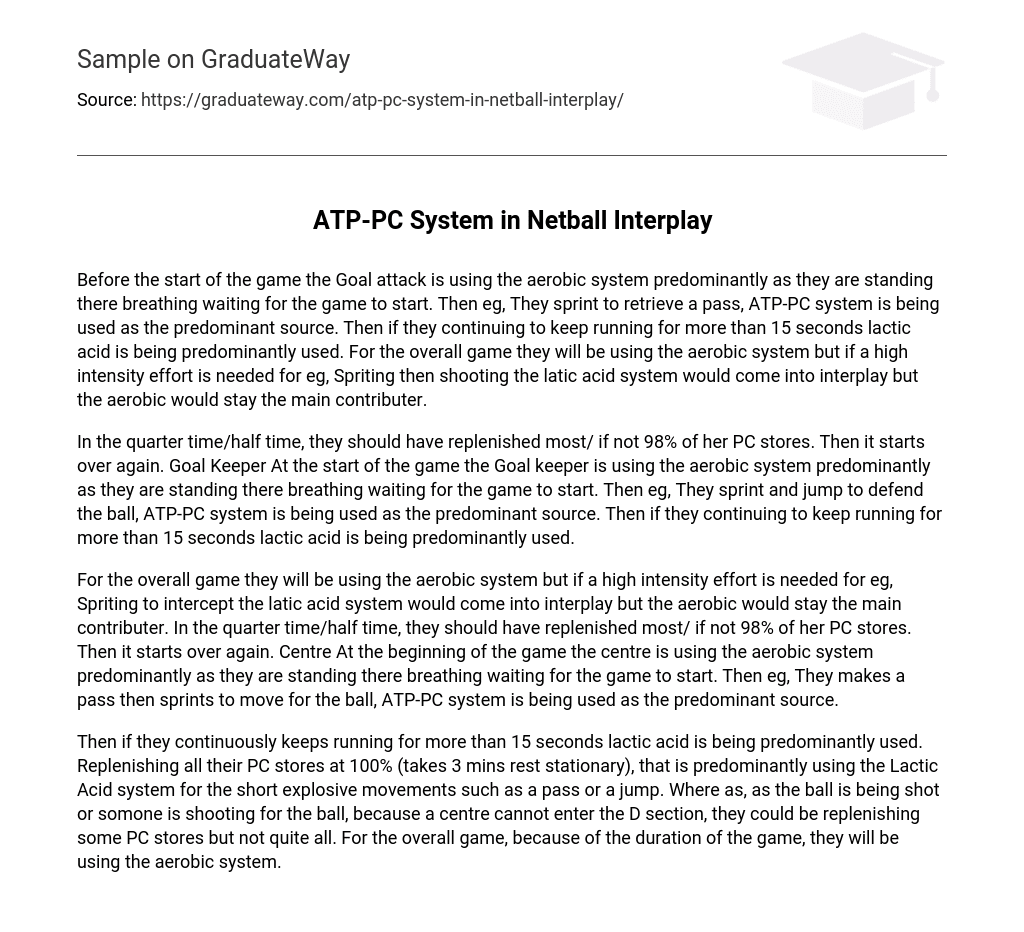Before the start of the game, the Goal attack is primarily using the aerobic system by standing and breathing while waiting for the game to start. Once the game begins, they sprint to retrieve a pass, and the ATP-PC system becomes the main energy source. If they continue running for more than 15 seconds, lactic acid becomes the predominant source of energy. Throughout the entire game, the aerobic system is used overall, but when a high intensity effort such as sprinting or shooting is required, the lactic acid system also comes into play while the aerobic system remains the main contributor.
At the beginning of the game, the Goal Keeper primarily uses the aerobic system while standing and waiting. As the game progresses, they may sprint and jump to defend the ball, relying on the ATP-PC system as the main energy source. If they keep running for more than 15 seconds, lactic acid becomes the predominant source.
The overall game primarily utilizes the aerobic system, however, in situations requiring high intensity efforts such as sprinting or intercepting, the lactic acid system comes into play while the aerobic system remains the main contributor. During quarter and halftime breaks, the goal should be to replenish most, if not 98%, of their phosphocreatine (PC) stores. This process repeats for each subsequent period. At the beginning of the game, the centre relies mainly on the aerobic system as they stand and breathe while awaiting game start. However, when they make a pass and sprint for the ball, the ATP-PC system becomes the primary energy source.
If an individual continuously runs for more than 15 seconds, they predominantly use lactic acid. They replenish their PC stores fully at 100% when they take a 3 minute rest while remaining stationary. This mainly occurs when they engage in short explosive movements like passing or jumping. When shooting the ball or someone is shooting for the ball, a center player cannot enter the D section and may replenish some PC stores but not all. Due to the game’s duration, the aerobic system is primarily used for the overall game.





